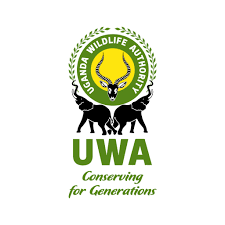Protecting Giants, Empowering Communities
Mountain gorilla conservation has evolved into one of the most inspiring wildlife protection success stories of our time, and central to that success is the role of gorilla trekking. Found in only three countries—Uganda, Rwanda, and the Democratic Republic of Congo—mountain gorillas once hovered dangerously close to extinction. Today, thanks to carefully managed tourism, strict conservation policies, and community involvement, their numbers are slowly rising. Gorilla trekking has not only raised global awareness but also generated vital funding for protection efforts, turning tourism into a powerful conservation tool.
Gorilla trekking allows small groups of tourists to hike into the misty mountains of protected areas like Uganda’s Bwindi Impenetrable National Park and Mgahinga Gorilla National Park, or Rwanda’s Volcanoes National Park. These adventures are not just about observing wildlife but about understanding the delicate balance between tourism and preservation. Each trekking permit contributes directly to conservation projects, research, ranger patrols, and community development. This model ensures that both gorillas and the human populations living around these forests benefit from conservation.
Strict regulations govern the trekking experience to minimize stress and disease transmission to the gorillas. Visitors are kept at a safe distance, their group size is limited, and time spent with the gorillas is carefully controlled. These rules are enforced by skilled rangers and guides who play an essential role in both protecting the gorillas and educating tourists about the significance of the conservation efforts.
Gorilla habituation, the process of slowly acclimating a gorilla family to human presence, is done with extreme care. It takes years of patient effort to ensure that the gorillas do not see humans as a threat. Only after this habituation process can a gorilla group be opened up for trekking. This approach safeguards the wellbeing of these critically endangered animals while also enabling tourists to have a rare, intimate glimpse into their world.
Mountain gorilla conservation through trekking goes beyond the animals themselves—it uplifts local communities too. The revenue generated from trekking supports jobs for guides, porters, lodge staff, and craftsmen. A portion of permit fees is allocated directly to community development projects such as schools, clinics, and water sources, ensuring that local people see real benefits from protecting their natural heritage. In areas where gorillas once clashed with human settlements, this economic incentive has transformed attitudes, turning former poachers into conservation advocates.
Moreover, the global visibility of mountain gorilla trekking has sparked international partnerships, funding research, veterinary care, and anti-poaching initiatives. Organizations like the Dian Fossey Gorilla Fund and the Gorilla Doctors work hand-in-hand with national parks and tourism operators to keep these primates healthy and thriving.
Mountain gorilla trekking stands as a shining example of how responsible ecotourism can fuel wildlife protection. It has turned the tide for a species once on the brink and continues to prove that with the right strategy, conservation and tourism can not only coexist—but thrive together. For every hiker who treks into the mist and meets the steady gaze of a mountain gorilla, the message is clear: by walking with nature, we help preserve it.





